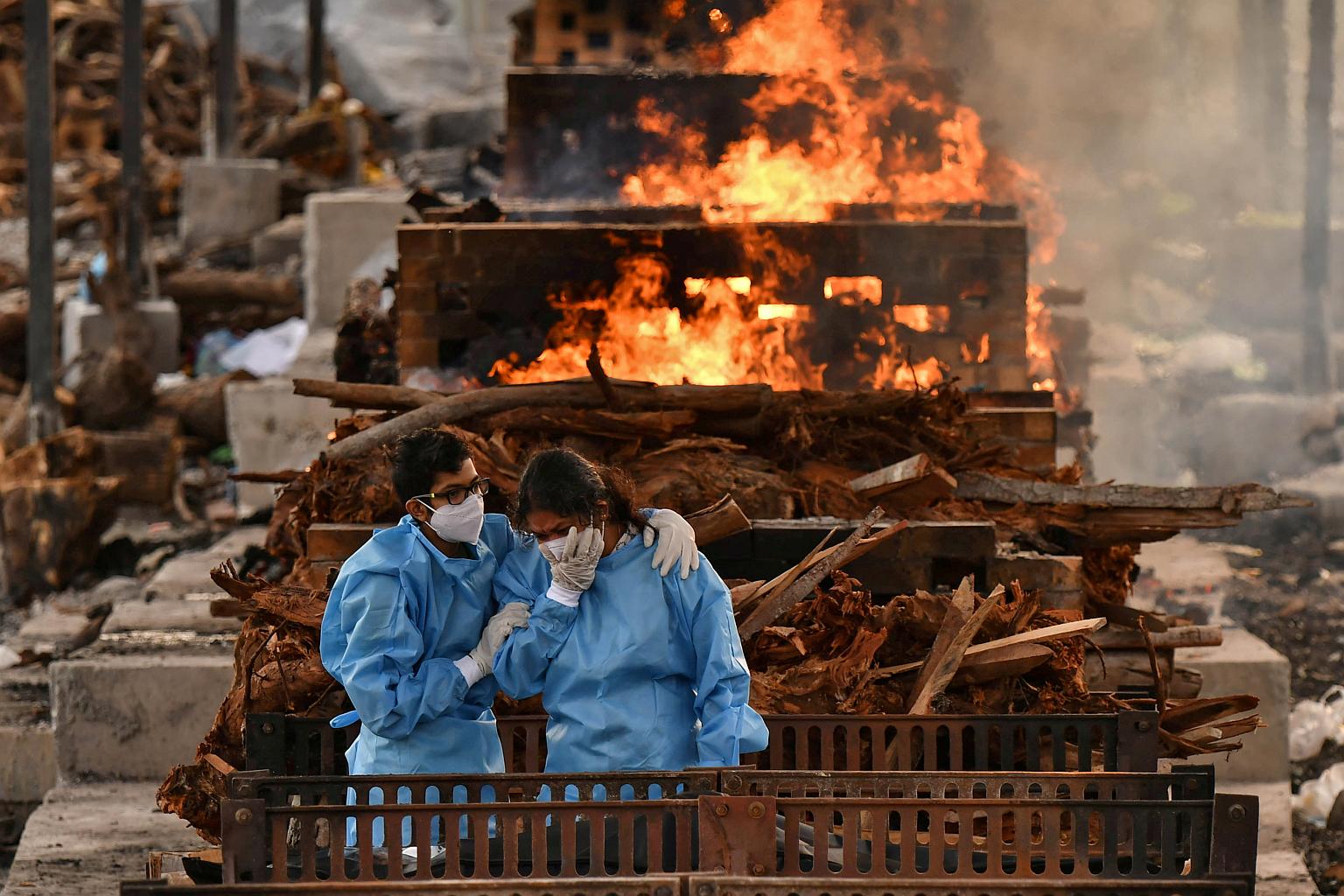Causes of more than three-quarters of deaths in India not ascertained
Sign up now: Get ST's newsletters delivered to your inbox

This absence of data raises worrying questions as such information is critical to track disease trends and plan health policies.
PHOTO: REUTERS
Follow topic:
KOLKATA - An overlooked but important health statistic has been getting public attention in recent weeks in India - its stubbornly low rate of medical certification of cause of deaths.
This refers to the process through which a medical expert must identify the reason for an individual's death on a prescribed form.
According to a government report released last month, causes of less than a quarter of the deaths registered in 2020 were ascertained. The rate was just 22.5 per cent of the 8,115,882 deaths registered that year.
In fact, there has been little improvement on this front for the past decade - in 2011, the figure was around 20 per cent. This is, however, in contrast with the level of registration of deaths which has increased from 66.4 per cent to 92 per cent between 2011 and 2019.
This continuing absence of data on the causes of such a high number of deaths raises worrying questions for India as such information is critical for any country to track disease trends and plan public health policies.
"Policymaking starts with the setting up of priorities backed up by good quality data and robust research," said Dr Anuj Kumar Pandey, a senior research officer at the International Institute of Health Management Research in Delhi. "If we do not have the exact numbers on the mortality caused by specific diseases, we fail to design effective policies for them."
For instance, chronic under-reporting of fatalities from mental health problems, road traffic crashes and vector-borne diseases has led to inadequate response strategies aimed at containing them.
Key identified reasons for deaths in 2020 included cardiovascular and respiratory problems.
India's low rate of medical certification of deaths essentially boils down to how a significant chunk of fatalities happen in the absence of medical attention. In 2020, this figure was 45 per cent for even registered deaths, up from 34.5 per cent in the previous year, a jump attributed to Covid-19.
The reporting and certification of such deaths that often occur in households has to be carried out by government health workers and medical experts from local healthcare facilities.
This involves conducting verbal autopsies to identify the cause of mortality, but Dr Pandey noted that there is a shortage of such experts at these facilities and health workers are not trained well enough to carry out these autopsies by themselves.
A study co-authored by him and released last year on medRxiv, a pre-print server for health sciences, suggested strict and better monitoring of death registration data, strengthening capacity building of staff and digitalising data entry as some measures to improve medical certification.
Causes of deaths also have to be classified based on a system of codes known as the International Classification of Diseases, which improves the accessibility and usefulness of mortality statistics.
At times, inadequate information from medical practitioners given on forms or poor medical knowledge of data entry operators compromise this process. Studies have stressed on the need to improve quality of certification and assessing causes of death even in tertiary care institutions.
It is not just the less developed states such as Uttar Pradesh (12.6 per cent) and Bihar (3.4 per cent) that have low rates of medical certification of deaths. Even Kerala, a state with high literacy and good health parameters, has a low rate of just 11.2 per cent.
However, a better rate is not entirely elusive. The states of Goa and Manipur, albeit smaller in size as well as population, attained a 100 per cent rate, even though some experts maintained they have to further improve their quality of medical certification.
Dr Meena Seram, the Manipur government's nodal officer for vital statistics, told The Straits Times that the state government accorded priority to the registration and classification of deaths, especially maternal deaths.
"We are very strict because we have to find a solution as to why such deaths occur so that they do not happen again," she said, identifying annual training for medical workers on classification of mortalities and incentives for primary informants of maternal deaths as some of the factors that have helped.

